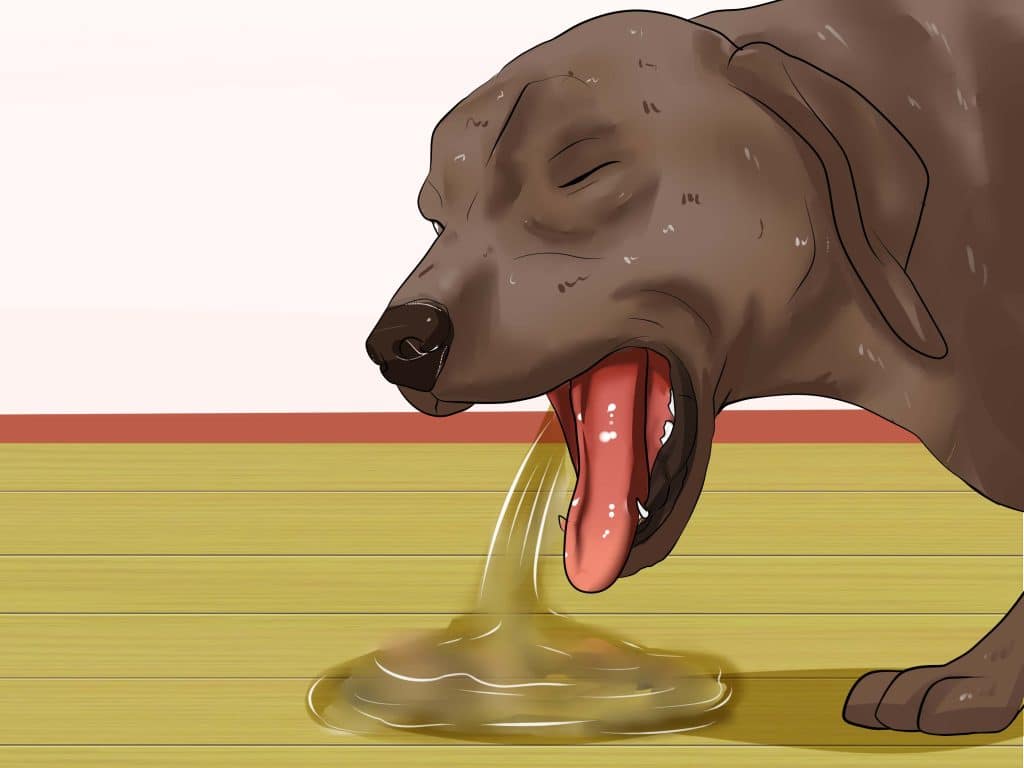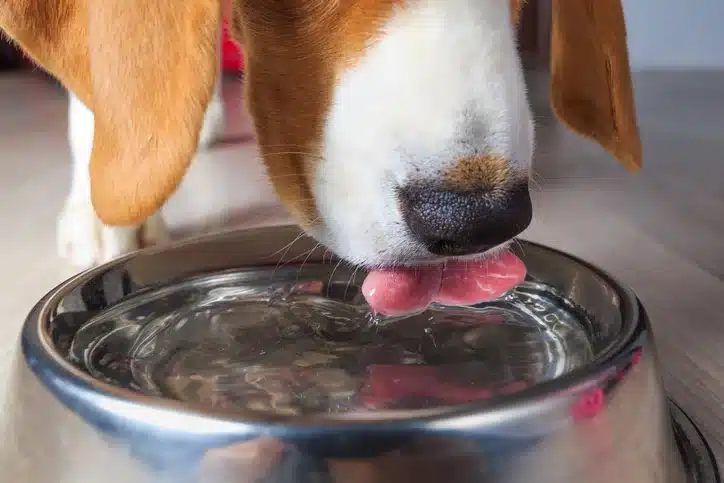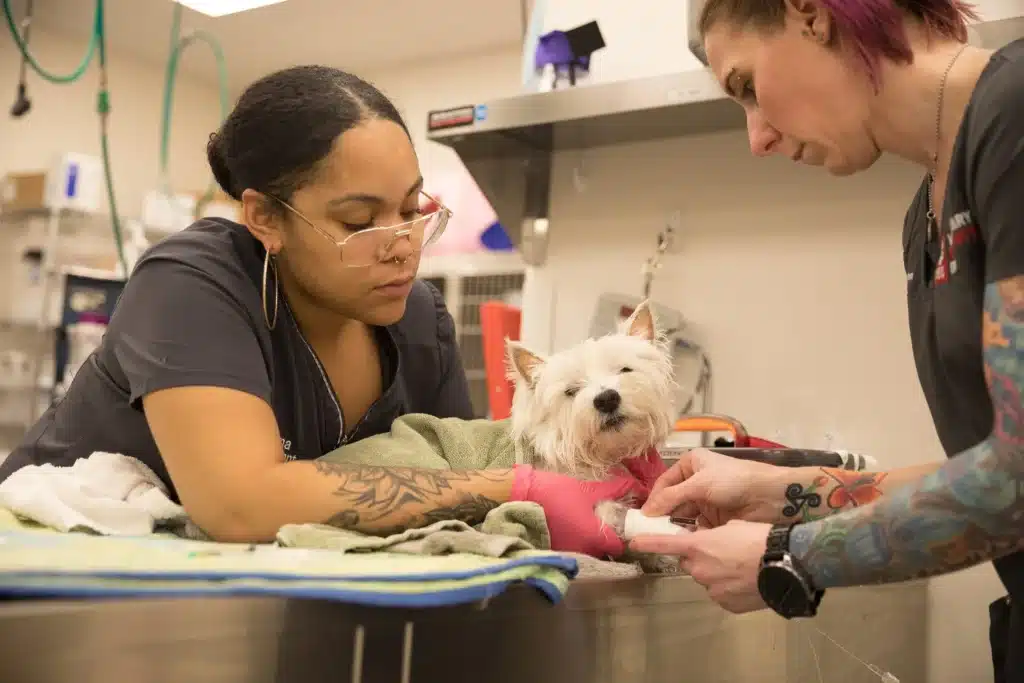Hydration is crucial for a dog’s overall health and well-being. Dehydration in dogs can lead to serious health issues if not addressed promptly. Recognizing the signs of dehydration is vital for every dog owner, as early detection can prevent complications. This blog post aims to provide comprehensive insights into the signs of dehydration in dogs, helping owners understand what to look out for and how to respond effectively. By being informed, owners can ensure their furry companions remain healthy and hydrated.
Understanding Dehydration In Dogs

Dehydration occurs when a dog loses more body fluids than they are taking in, leading to a deficit of water and essential body salts. This condition can affect dogs of all ages and breeds, though some may be more at risk due to their health, lifestyle, or environment. Dehydration in dogs is not just about water loss; it’s also a loss of electrolytes, such as sodium, chloride, and potassium, which are vital for maintaining fluid balance, muscle function, and other critical body processes.
Environmental factors such as high temperatures, inadequate shade, or insufficient water supply can increase the risk of dehydration. Additionally, health issues like diarrhea, vomiting, or fever can also contribute significantly. It’s not just about the amount of water a dog drinks; how much they retain is equally important. Understanding these contributing factors is the first step in preventing dehydration and ensuring pets remain healthy and well-hydrated.
Early Signs Of Dehydration

The initial symptoms of dehydration in dogs can be subtle but are crucial indicators. A dry nose, which is normally moist in healthy dogs, can be one of the first signs. Alongside this, owners might notice a general lethargy or reduced energy levels, even during activities that usually excite the dog. Appetite might decrease, and there could be a visible reduction in the usual vigor and enthusiasm.
Another early sign is a change in the elasticity of a dog’s skin. A simple way to check this is by gently lifting the skin on the back of the neck or between the shoulder blades. In a well-hydrated dog, the skin will quickly return to its normal position. However, in a dehydrated dog, the skin may not fall back as rapidly. This test, known as a skin turgor test, is a quick and easy way to assess hydration levels at home.
Physical Signs To Look For

As dehydration in dogs progresses, more evident physical signs begin to manifest. Sunken eyes, a clear indicator of severe dehydration, are a sign that immediate action is needed. Additionally, the gums, which should be moist in a healthy dog, become dry and sticky. This change in gum texture is a critical sign that the dog’s hydration levels are dropping dangerously low.
Loss of skin elasticity becomes more pronounced as dehydration worsens. In severe cases, when the skin is pulled gently, it may stay tented for several seconds or not return to its normal position at all. The heart rate may increase, and there can be signs of shock, such as a rapid pulse or cool extremities. These symptoms indicate a serious condition requiring urgent veterinary attention to prevent further health complications.
Behavioral Changes Indicating Dehydration

Dehydration can significantly alter a dog’s usual behavior. Increased panting, a common response to overheating and dehydration, is often more pronounced and lasts longer than normal. A noticeable decrease in energy or enthusiasm for activities they usually enjoy is another red flag. Dogs might also seek cooler places to lie down, indicating their body is trying to regulate its temperature.
In young puppies and senior dogs, these behavioral changes can be more dramatic. Puppies may become irritable or restless, while older dogs might show signs of confusion or disorientation. These age-specific responses underline the importance of monitoring behavior closely in all dogs, but especially those at the extremes of age, who might be more vulnerable to the effects of dehydration.
Severe Dehydration Symptoms

When dehydration becomes severe, symptoms escalate quickly and can become life-threatening. Dogs might exhibit signs of gastrointestinal distress, such as vomiting or diarrhea, which can further dehydrate the body. In extreme cases, there might be a noticeable decrease in urination, or urine may become much darker in color.
Other serious signs include a rapid heart rate, labored breathing, and in some cases, collapse. If a dog displays any of these severe symptoms, immediate veterinary care is necessary. At this stage, dehydration can lead to organ failure and other critical health issues, so prompt medical intervention is crucial to the dog’s survival.
Preventing Dehydration In Dogs

Preventing dehydration is key to maintaining a dog’s health. Ensuring constant access to fresh, clean water is the most straightforward and effective measure. For dogs that spend a lot of time outdoors, multiple water stations should be provided, along with adequate shade and opportunities to cool down.
During hotter months or after exercise, extra attention to a dog’s hydration needs is essential. Adding water or wet food to their diet can help increase fluid intake. Owners can also use ice cubes or special dog-friendly ice treats as an additional source of hydration and a fun way to encourage drinking.
When To See A Veterinarian

Understanding when to seek veterinary help is crucial in managing dehydration in dogs. If there are any doubts about a dog’s hydration status, especially if any of the earlier mentioned symptoms are observed, a visit to the vet is advisable. Even mild symptoms can escalate quickly, and early veterinary intervention can prevent more serious complications.
Veterinarians can provide various treatments, including fluid therapy, to rehydrate the dog and address the underlying cause of dehydration. Regular check-ups and discussions about a dog’s hydration needs can help owners stay informed and prepared to keep their pets healthy and hydrated.
The Bottom Line
Recognizing and addressing dehydration in dogs is essential for their health and well-being. Owners should be vigilant for any changes in behavior, physical condition, or routine that might indicate dehydration. Regular access to clean water, appropriate shelter, and attentive care are vital. When in doubt, consulting a veterinarian is always the best course of action. Proactive care, including understanding the signs of dehydration and how to prevent it, is key to ensuring a long, healthy life for beloved canine companions.